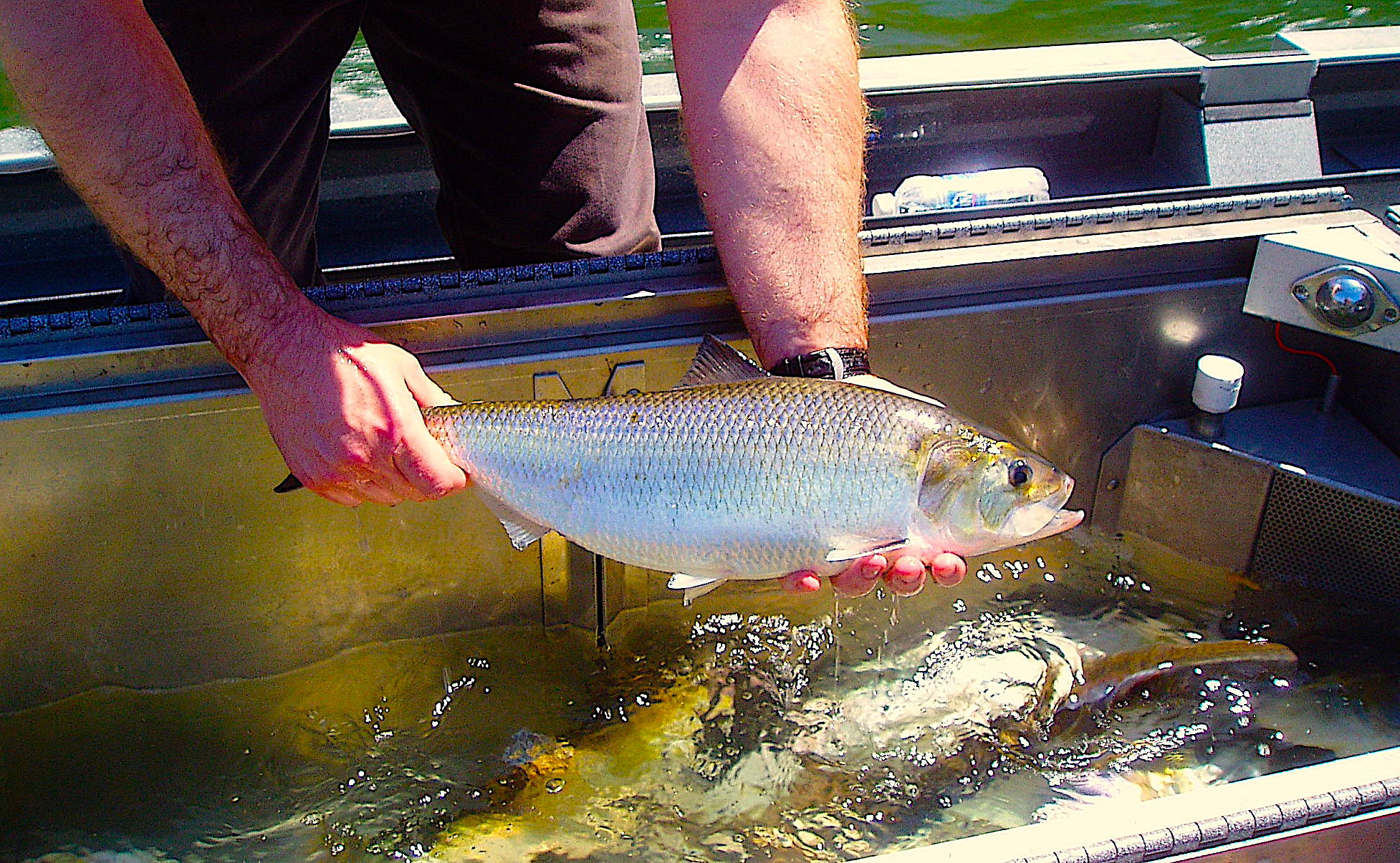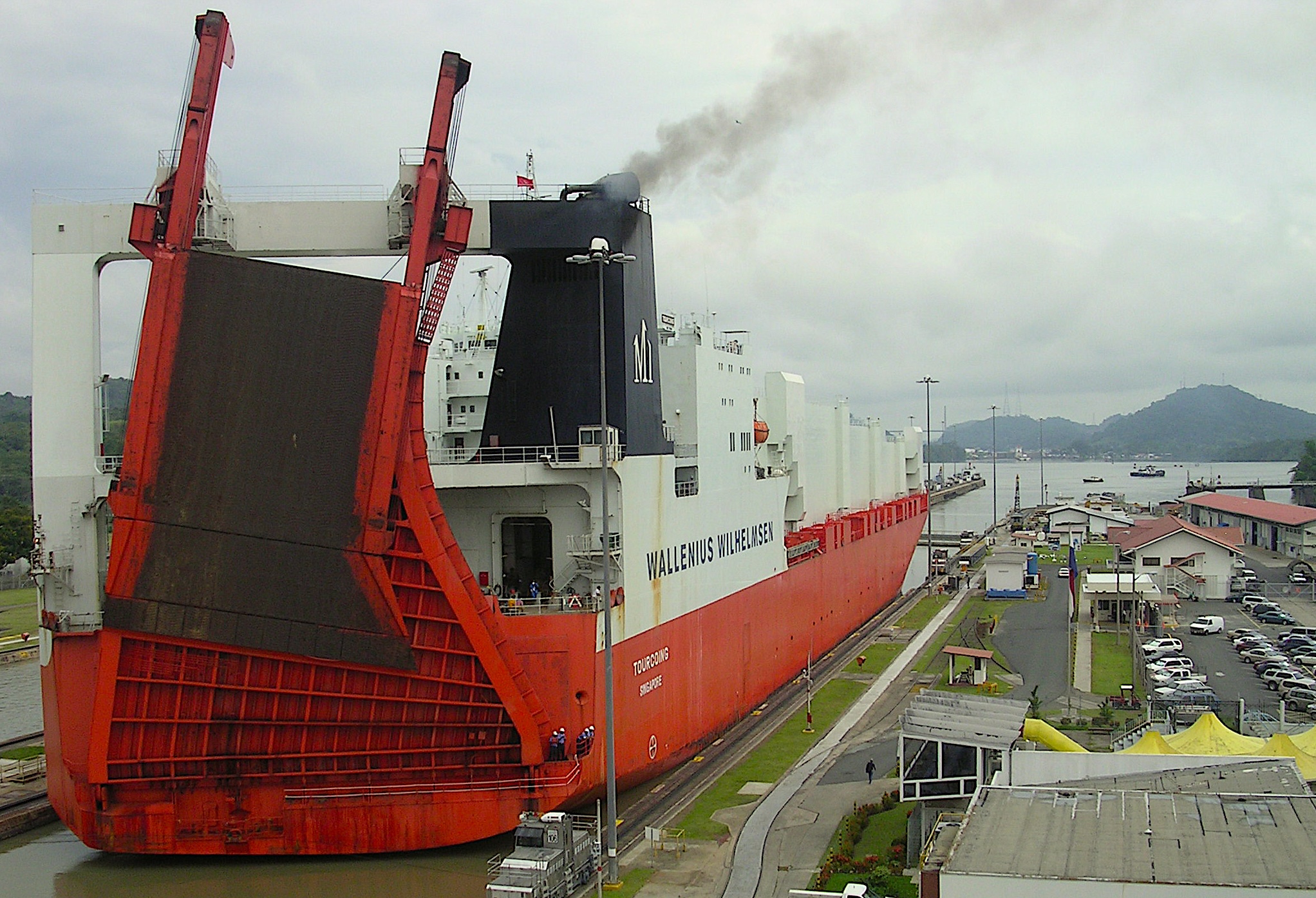Where Do American Shad Like to Spawn?

When these fish return to the Albemarle Sound to reproduce, they prefer one river basin — by far.
Spring is officially here, and the shad are running. From late February through early April each year, American shad, often called “white shad,” return to North Carolina coastal waterways headed for obscure backwaters where they complete their mating rituals and lay eggs before returning to sea. This fish population, hit hard by historical overharvests and a large commercial fishery, is making a comeback — due to activities like state stocking of recently hatched shad — but not to the extent managers hoped.
Research Need
American shad once supported one of the largest commercial fisheries along the Atlantic Coast. Dams and other man-made impediments that block spawning habitat in rivers, combined with habitat degradation and overfishing, severely depleted American shad populations. In 2005, fishery managers closed commercial ocean fishing for this species, yet the most recent coastwide stock assessment found that most American shad stocks remain at all-time lows and do not appear to be recovering.
It is believed the fish generally return to their birthplace to spawn. For example, fish entering the Albemarle Sound to spawn primarily swim upstream on the Roanoke River or the Chowan River. Determining the current primary spawning river for American shad in the Albemarle Sound would help inform research efforts and resource management decisions to improve stocks.
What did they study?
For much of the time period from 2013 to 2019, state biologists tagged and released a total of 266 adult American shad from various locations within Albemarle Sound. The small sound-emitting “acoustic tag” allows the detection and remote tracking of organisms in aquatic ecosystems. An array of acoustic receivers at ocean inlets and throughout the Albemarle Sound, the Chowan and Roanoke rivers, and their smaller tributary rivers detected fish as they migrated.
What did they find?
Of the 266 tagged fish, receivers subsequently detected 212. The 56 other fish presumably died not long after tagging. In over half of the detected fish (114 of the 212), tagging resulted in the fish aborting their spawning runs and moving back down stream; 28 of those fish did resume a spawning run later (on average, after 11 days), but 86 fish left the system entirely.
Of the fish that completed upstream migrations, there were 56 runs up the Chowan River, 5 up the Roanoke River, and 1 each up the Alligator and Pasquotank rivers. Of the Chowan River migrations, 39 remained in the upper Chowan River, 8 entered the Meherrin River, and 9 entered the Nottoway River. None of the fish used the Blackwater River.
Because migrating adult fish typically return to the rivers where they were born, these results suggest that American Shad entering the Albemarle Sound are disproportionately spawning in the Chowan River basin and that the Chowan River basin may host a larger population.
What else did they find?
The observed higher use of the Chowan River over the Roanoke River (56 runs, compared to only 5) for spring spawning migrations could partially be the result of differences between the two river basins. The Chowan River and its tributaries offer significantly more unimpeded miles of river: 610 miles, compared to only 214.
These findings suggest that over many years the Roanoke River population of American shad may become depleted, compared to the population that is homing to the Chowan River.
Anything else?
Despite American shad in the Albemarle Sound system typically experiencing multiple reproductive cycles over the course of a lifetime, the research team detected only a single fish that made a repeat migration, and that was into the Chowan River in years 2013 and 2014. This might be because of the relatively low sample size of the study and the high tagging mortalities (presumably about 20%).
Reading
Mack, K., H. White, and F.C. Rohde. 2021. “Use of Acoustic Telemetry to Identify Spawning River and Spawning Migration Patterns of American Shad in the Albemarle Sound, North Carolina.” North American Journal of Fisheries Management 41:242–251.
North Carolina Division of Marine Fisheries (DMF), the North Carolina Wildlife Resources Commission, NC State University, and Dominion Energy placed and maintained the receiver array that detected the fish, as well as retrieving data from the receivers. DMF also managed the data, as well as capturing and tagging the fish the receivers tracked.
By Sara Mirabilio.
Lead photo: American shad, courtesy of the USFWS.
The text from Hook, Line & Science is available to reprint and republish at no cost, but only in its entirety and with this attribution: Hook, Line & Science, courtesy of Scott Baker and Sara Mirabilio, North Carolina Sea Grant.
- Categories:



